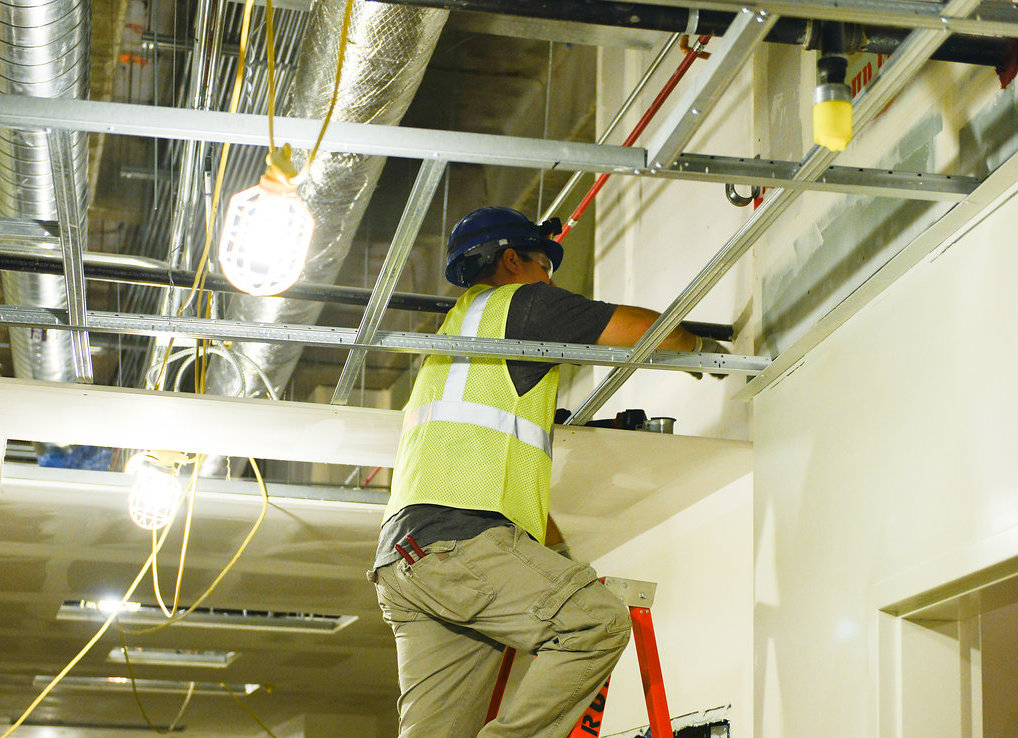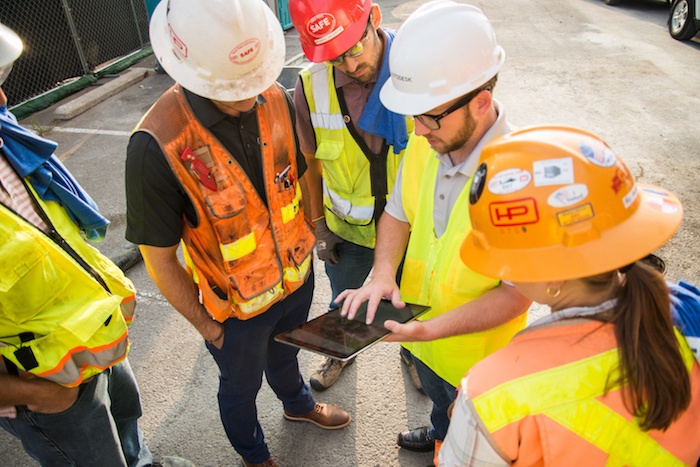Why your construction firm is really in the business of construction technology

The construction industry has a technology problem
A 2016 survey by strategic advisory firm, KPMG, shows that the industry is ambivalent about technology uptake. While 61% of construction companies are using Building Information Modeling (BIM), the survey also found that firms are not investing in single, fully integrated project management information systems. Instead they are using multiple software platforms that are manually monitored, an inefficient use of software at best. This can lead to a perception that they are not getting full value from BIM because information is lost as it moves from design processes and into construction.
Additionally, nearly 40% of construction firms that use mobile technology do not link to an integrated system or enterprise-wide project management system. This means mobile technology isn’t being put to its best use in the very place where it is supposed to make the most difference.
Geno Armstrong, International Sector Leader, Engineering & Construction, KPMG in the U.S., explains further: “Many [construction firms] lack a clear technology strategy, and either adopt it in a piecemeal fashion, or not at all.”
If there is an industry-wide lack of technology strategy, then this helps to explain the construction industry’s well-documented productivity problem, which according to the McKinsey Global Institute, has only grown 1% annually for the last 20 years. McKinsey’s report identifies underinvestment in technology as a root cause of this lack of productivity.
The construction industry is changing. Don’t get left behind
There are also strategic, systematic ways to pursue implementing new construction technology that can help take the pain out of the transition. And while there is fear, real or imagined, that will be a difficult and lengthy process, on the other hand, there are also plenty of opportunity.
The bottom line is, whether you are ready to change or not, 3 truths are self-evident:
1. Construction companies are taking on more risk
Research shows that embracing technology and innovation is an excellent way to improve results as projects become more complex: “Projects are becoming bigger, bolder and more complex – and with complexity comes risk,” KPMG’s Armstrong said. “Innovations like remote monitoring, automation and visualization have enormous potential to speed up project progress, improve accuracy and safety.”

As projects around the world become more challenging, so does the inherent risk. Even small projects are becoming more complex, and demand greater innovation and planning than ever before. New materials, new regulations, and the drive for greener building propel an ever-changing landscape that requires contractors to embrace technology to anticipate and mitigate risk if they want to be successful.
2. Owners demand more
Your construction firm might not want to adopt new technologies, but your clients will. When we talk to our customers, one thing we hear is that owners want more transparency, more control, and more involvement in their projects than ever before. They also expect their projects to be managed to tighter budgets and completed on faster timelines.
Owners are starting to require construction firms to give them the data-rich 3D models used in construction, so they can use them for operations and maintenance. These 3D models were populated with construction data such as equipment information from the commissioning process. Using Autodesk’s BIM 360 Field, this data is captured in the field on mobile devices, and links directly back to the model. The user doesn’t even need to be aware they are updating the 3D model; the user is just performing a task in a form on an iPad.
There is an opportunity here for a new revenue stream that some construction firms have already jumped on: construction firms running operations and maintenance.

Think about it: who knows better how to manage the guts of your building than the very people who built it? The wealth of information contained in the 3D model — HVAC, and how that aligns with walls, steel beams, ductwork, electrical wiring, sensors, etc., etc. — should inform how a building is maintained.
Mid-size construction firm, IMCO Construction, will use the 3D models they created using various technologies including drone image capture and BIM 360 Field for their award-winning water treatment plant project in Washington state to run the plant once it’s open. This foray into O&M represents a new revenue stream for the firm. IMCO’s Director of Technology, Brian K. Smith, explains “[We will]” use the 3D model to link to the asset data, like maintenance logs”. Having this level of visibility into construction detail will make running the plant easier, and the team more effective at identifying issues and solutions.
3. Your competition is becoming tech savy
Construction companies that embrace technology are pulling ahead of the pack. They’re using it to become more efficient, to increase their margins, to reduce rework, to increase safety standards, etc… and they are bidding against you for the same projects you want. If you have trouble holding your team to schedules, or to quality control standards, or to keeping costs under control, your competitors will take your business.
On the flip side of the coin, there is also opportunity here. IMCO’s Brian K. Smith credits using emerging techniques like drones for surveying, prefabrication methods and using BIM tools like BIM 360 Field and BIM 360 Glue for helping the midsize firm punch above its weight-class, and bid on contracts they might not otherwise have a shot at.
How many construction projects have you been part of where the project is delivered 10 months early? Or there quality control was so good that in you only experienced one minor layout error in more than 130,000 man-hours? And all the while creating a new revenue stream in running O&M, which becomes another business advantage that can edge out the competition.
Why you should become a construction technology company
New types of construction technology are being introduced in the market with increasing speed. Drones, robotics, 3D printing, BIM, cloud file management–these are all technologies that are having a major impact on the firms that are making the investment in their future. Reliance on these new technologies will only increase with time. It’s time to get on board, or risk going the way of the fax machine.
It’s your choice. But if you’re willing to embrace the technology and reframe your company around it, there are significant benefits to be had.
Attract new talent
It’s an open secret that the construction industry is having a tough time attracting young people. This is by no means a new problem, nor is it going away anytime soon.

It is another open secret that the younger generations, especially those just entering the workforce, love technology. By embracing new technologies and rebranding as a technology company, you can snatch up the best new talent and give this tech savvy labor force some innovation challenges that will test their technology skills.
Improve client perception
While the construction industry may be largely stuck in the past, the rest of the world is not. Clients expect projects to be run in a professional, orderly manner, and they want to have a hand in what’s going on. They know what technologies are available, and they notice when a contractor is not using the most productive and efficient technologies for the job.
By becoming a tech savvy company, you’ll be perceived as more of your professional, capable, and successful in the eyes of your clients. By getting ahead of the technology curve, your clients can come to see you as consultant rather than simply taking orders and seeing them through. and even as a savvy consultant.
Giving owners the option to use your trusty BIM files at handover, or even running O&M yourself puts you in a strong position to maintain the owner-client relationship beyond handover.
Stay ahead of your competition
‘Nough said.
Get a head start on the future
Look, you don’t have to be Sherlock Holmes to know the future doesn’t look too bright for hands-on labor. Robots have already replaced a huge portion of factory jobs, and now they’re starting to replace fast food workers and construction workers. If your business is predicated on providing skilled labor, you’re unlikely to be in business in twenty years.
Reframing as a technology company will enable you to stay nimble and on top of the industry–in other words, ahead of the competition and the future.
ABOUT THE AUTHOR
Peter Billante is currently the Sr. Marketing Manager responsible for Autodesk BIM 360 Marketing, leading industry engagement for BIM 360 Docs, a comprehensive, cloud-based service that provides a virtual workspace to create, access, maintain, markup and share 2D and 3D project documents, plans and models. Billante joined Autodesk in 2012 as Product Line Manager for BIM 360 Field, via the acquisition of Vela Systems, where he was VP of Product Management. He has an MBA from MIT’s Sloan School of Management and graduated from Vanderbilt University with a degree in Electrical Engineering and Computer Science.
Source: https://builtworlds.com/distributed/construction-firm-really-business-construction-technology/












